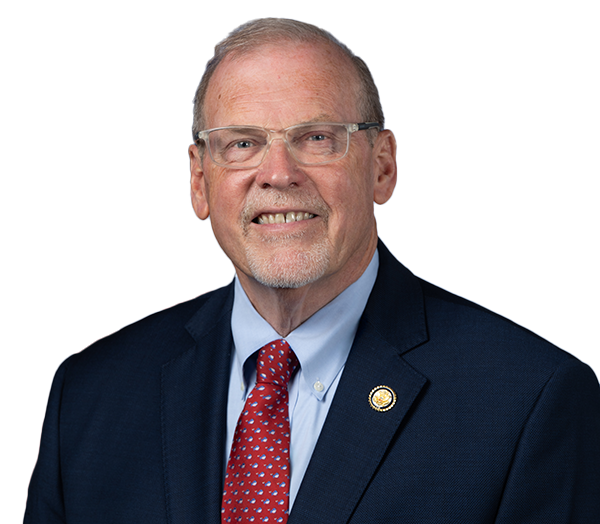Congressman Griffith's Weekly E-Newsletter 7.1.22The American Revolution in Western Virginia
Friday,
July 1, 2022
|
Kevin Baird
(202-225-3861)
As Americans celebrate the Fourth of July, we often reflect on the Declaration of Independence adopted on that date in 1776. Its words endure. Even as it listed specific grievances against King George III, the Declaration also offered a statement of principles that guided our country from then until now: “We hold these truths to be self-evident, that all men are created equal . . .” The Declaration was adopted and signed in Philadelphia by the Second Continental Congress. Meanwhile, the Continental Army under General George Washington was in the field in New York. For much of the rest of the Revolutionary War, Washington’s army fought in New York, Pennsylvania, and New Jersey, shifting to Virginia to win victory at Yorktown in 1781. The names of the battles in those states still resonate across the country, but Southwest Virginia and its settlers saw action in the American Revolution, too. At the time of the Revolution, our region was still frontier. One of the grievances colonists had against the British was the Royal Proclamation of 1763 barring settlement west of the ridge of the Appalachians. Settlers nevertheless pushed into the area, leading to conflict with Native American tribes. Subsequent agreements between the British and some of the tribes failed to quell trouble. Among the frontiersmen moving west was Daniel Boone, who explored Kentucky and guided others to settle there. On an expedition in 1773, a party including his son James and Henry Russell, son of Russell County’s namesake William Russell, came under attack by the natives. Several, including the young Boone and Russell, were tortured and killed. A historical marker noting the event can be found today in Stickleyville in Lee County. Outbreaks of violence contributed to the decision by Virginia’s colonial governor Lord Dunmore to send forces to the west. The expedition was split between Dunmore leading one part and Andrew Lewis the other in an effort to surround the Shawnee. Lewis lived in what is now Salem and western Roanoke County. While carrying out the plan, Lewis and his men met Shawnee warriors under Chief Cornstalk at what is now Point Pleasant in West Virginia, land Lewis in fact owned at the time from a king’s grant for his service in the French and Indian War. Lewis carried the day. The Battle of Point Pleasant on October 10, 1774, helped decide the outcome of what became known as Lord Dunmore’s War, and the Treaty of Camp Charlotte ceded Shawnee lands south of the Ohio River to the British. Less than a year later, Lewis and Dunmore were on opposite sides of the Revolutionary War, Lewis as a Patriot and Dunmore as a Loyalist. In fact, Lewis led the forces which drove Dunmore from his position on Gwynn’s Island, compelling the governor to leave Virginia forever. The war forced settlers on the frontier to be on guard both against the British and potential conflicts with the Native American tribes which the British sought to provoke. Keeping the peace was the principal mission of General Joseph Martin, a surveyor, trapper, and soldier. Before the war, he had established Martin’s Station in what is now Lee County, a waypoint for those heading west. Governor Patrick Henry appointed him Agent and Superintendent of Indian Affairs in 1777. Martin undertook the difficult work of keeping the peace with patience and courage. He countered the efforts of British agents seeking to enlist the Native Americans as allies and mediated disputes between natives and settlers. Thanks in part to his efforts, when British strategy shifted its focus to the southern states as the place to win the war, the frontiersmen were largely at peace with the Native Americans and so able to focus on the threat the British and Loyalist forces posed. Victory at Kings Mountain by the Patriots, including the Overmountain Men who began their march south at the Abingdon Muster Grounds, ushered Lord Cornwallis down the road that led to Yorktown. Joseph Martin continued to serve as agent until 1789 and also held the role for North Carolina. He later returned to Virginia and lived in Henry County, where he is buried. The City of Martinsville bears his name today. While the most famous battles of the Revolution did not take place here, western Virginia was the site of conflict, and its people did their part to secure independence. We can be proud of their achievements as we celebrate our entire country on Independence Day. If you have questions, concerns, or comments, feel free to contact my office. You can call my Abingdon office at 276-525-1405, my Christiansburg office at 540-381-5671, or my Washington office at 202-225-3861. To reach my office via email, please visit my website at www.morgangriffith.house.gov. ### |
Stay Connected
Use the form below to sign up for my newsletter and get the latest news and updates directly to your inbox.

